Preface
In peacetime, conducting highly intensified military activities in a coastal state’s surrounding waters, such as thousands of close-in reconnaissance operations and hundreds of military exercises, is contrary to the spirit of “maintaining international peace and security” of the UN Charter and the principle of “peaceful uses of the seas” established by the United Nations Convention on the Law of the Sea (UNCLOS).
Since 2009, US military activities against China in the South China Sea have strengthened in both frequency and intensity. Amid the Russia-Ukraine and Israel-Palestine conflicts, US naval and air forces have been constrained by events such as the Red Sea crisis. Despite these challenges, the US has maintained a high-intensity military presence in the South China Sea and surrounding areas.
In 2024, apart from bombers as well as ocean surveillance and survey vessels, the number and frequency of US military platforms operating in the South China Sea have stagnated, reaching their limits. The US has shown greater risk-control awareness, by reducing provocative aerial close-in reconnaissance missions to China. However, it continued to leverage the Philippines as a key node to create “increments”, significantly intensifying exercises, drills, and strategic and tactical deployments aimed at the South China Sea and the Taiwan Strait.
The US military presence and operations remain major factors affecting the situation in the South China Sea. Since 2019, the South China Sea Strategic Situation Probing Initiative (SCSPI) has been releasing this annual report, An Incomplete Report on US Military Activities in the South China Sea. The report is intended to promote the transparency of South China Sea Situations and provide the perspective of a third-party think tank for reference to government departments, research institutions, media and the public of related parties.
Director of SCSPI Hu Bo
Key Findings
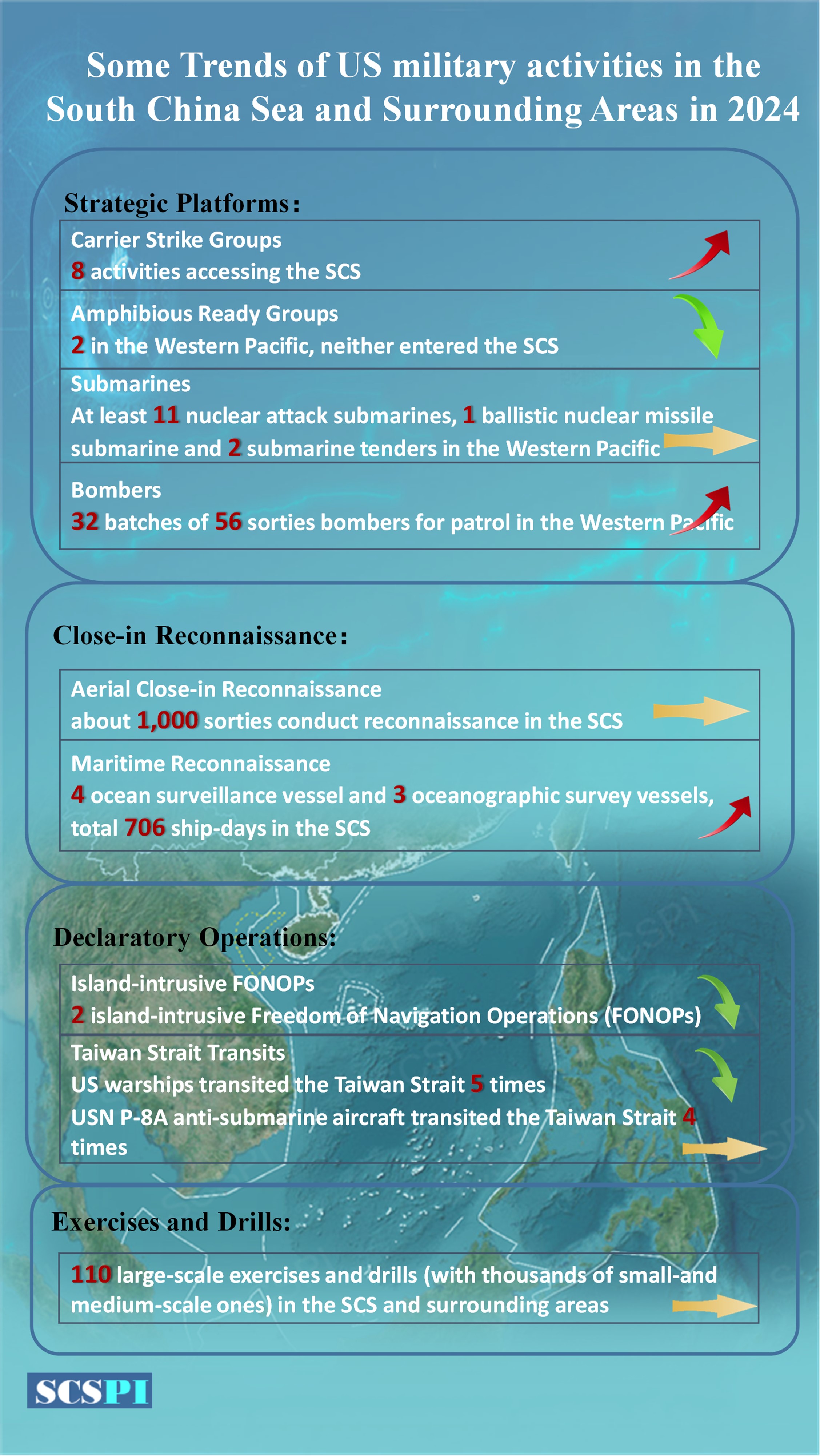
I. Continuously Strengthened Strategic Platforms’ Activities
1. CSGs
In 2024, the US military dispatched 3 CSGs, USS Carl Vinson (CVN-70), USS Theodore Roosevelt (CVN-71) and USS Abraham Lincoln (CVN-72), for a total of 8 activities accessing the South China Sea.
They were more inclined to choose the Balabac Strait as a passage between the South China Sea and the Philippine Sea.
2. ARGs
In 2024, the US military deployed two ARGs in the Western Pacific, USS Boxer (LHD-4) and USS America (LHA-6), but neither entered the South China Sea.
The vacuum of USN ARG activities in the South China Sea in 2024 also indicates the difficulty of maintaining normal presence in the SCS of ARGs.
3. Submarines
In 2024, according to limited information, the US Navy has at least 11 nuclear attack submarines, two guided nuclear missile submarines, one ballistic nuclear missile submarine and two submarine tenders to carry out cruise missions in the Western Pacific including the South China Sea.
The deployment of USS Minnesota in Guam marked the normalization of the US Virginia-class submarine in the Western Pacific.
4. Bombers
The US Air Force (USAF) has sent a total of 32 batches of 56 sorties B-52H, B-1B and B-2A bombers for patrol in the Western Pacific. With annually increasing sorties, the number in 2024 is nearly twice that of 2023.
The US military has strengthened its cooperation with allies in bomber deployment and combat exercises, with Australia becoming an important foreign partner for implementing “dynamic force employment”.
II. Uneven Increase of Marine and Aerial Reconnaissance
1. Flat Aerial Close-in Reconnaissance
In 2024, the US military dispatched USN P-8A anti-submarine aircraft and MQ-4C unmanned aerial vehicle (UAV), the UNAF RC-135 reconnaissance aircraft, E-3B airborne early-warning aircraft, MQ-9 Reaper UAV and the US Army (USA) ARES reconnaissance aircraft (Global 6500), totaling about 1,000 sorties, with no significant increase compared to 2022 and 2023.
2. Significantly Intensified Maritime Reconnaissance Activities
In 2024, the US military deployed 4 ocean surveillance vessels and 3 oceanographic survey vessels. The total 706 ship-days in activity bypassed the duration in 2023 significantly. There was at least 1 vessel operating in the region for 343 days throughout the year, showing almost no interlude.
3. Highlighted Joint Marine and Aerial Reconnaissance Operations
In 2024, the joint operations and coordination of marine and aerial reconnaissance platforms were significantly strengthened. USN reconnaissance vessels weighed more on the coordination with aerial close-in reconnaissance, actively integrating into the US military combat system.
III. Low-frequency Declaratory Operations
1.Island-intrusive FONOPs
In 2024, the number of the US military’s island-intrusive Freedom of Navigation Operations (FONOPs) decreased to 2, only higher than 1 in 2015, suggesting an overall downward trend. However, other types of FONOPs have not weakened.
2. Taiwan Strait Transits
Throughout 2024, the US warships transited the Taiwan Strait 5 times, each accompanied by public hype. Compared to 6 times in 2023, 9 in 2022, 12 in 2021 and 15 in 2020, the frequency has decreased, aligning with a downward trend in the past 5 years.
IV. Continuously Boosted Joint Operations with Allies
1. US-Philippine Military Cooperation
Targeting the South China Sea and Taiwan Strait, the US continued leveraging the Philippines as a strategic “node” to expand its bilateral and multilateral Asia-Pacific security networks through military cooperation such as funding, military bases enhancements, weapon deployment and joint patrols.
2. Joint Operations with Japan, Australia and Other Allies
First, the US strengthened military coordination with countries such as Japan, Australia and South Korea to enhance deterrence in the Western Pacific.
Second, policy coordination with Japan and Australia had been strengthened to deepen and expand cooperation mechanisms.
3. Strengthen Regional Maritime Domain Awareness
First, developing situational awareness equipment and strengthening the deployment of forward platforms.
Second, a US-led MDA network was developed through bilateral and multilateral cooperation agreements.
V. Exercises and Drills for Enhancing Combat Readiness
1. Expanding Multilateral Exercise Alliance
In 2024, the US military had 110 large-scale exercises and drills (with thousands of small-and medium-scale ones) in the South China Sea and surrounding areas (east to the Philippine Sea and south to Australia). The 110 exercises comprised 5 unilateral as well as 105 bilateral and multilateral exercises.
2. Unprecedented Scale of Some Exercises
In 2024, large-scale exercises conducted by the US in the Western Pacific region were further expanded. The US military not only demonstrated its military presence and combat capabilities in the region, but also strengthened its joint operational capabilities with allies.
3. Increasingly Targeted Exercise Subjects
In 2024, based on great power competition and purported enemy (China), US military exercises in the Western Pacific region were more targeted, simulating complex combat environments and setting contrapuntally content to enhance the military deterrence and combat capabilities in the region.
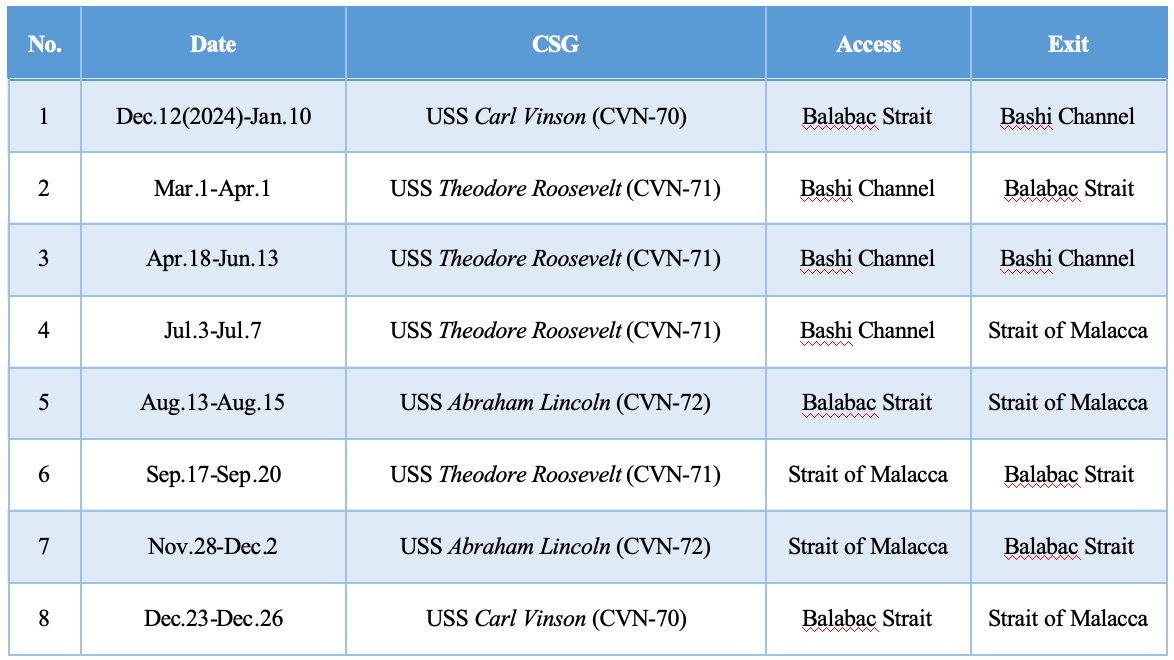
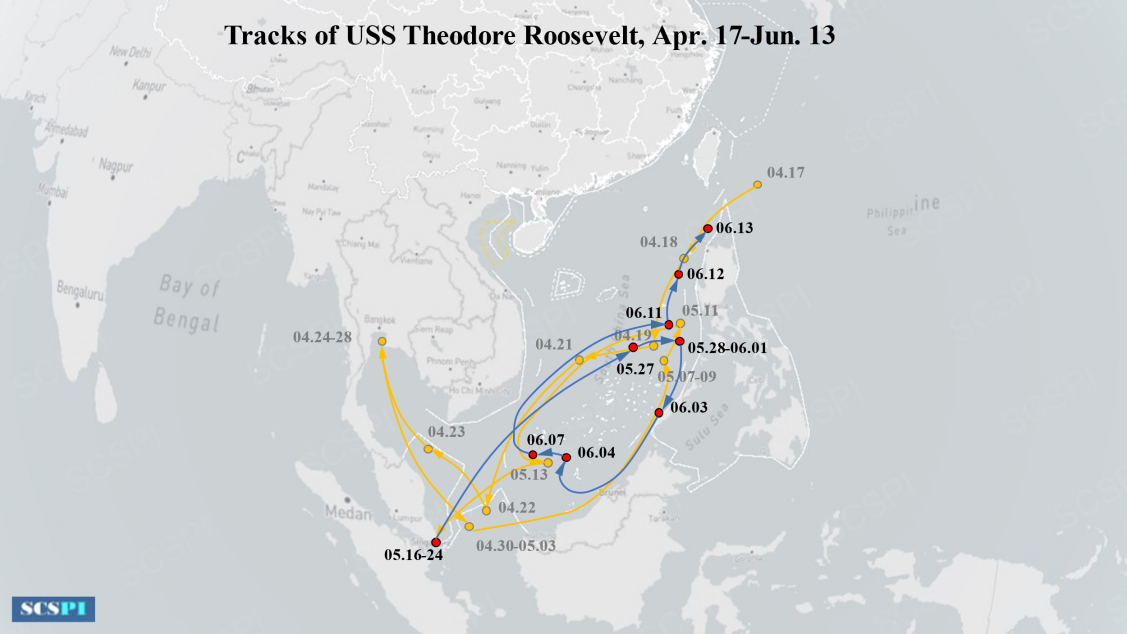
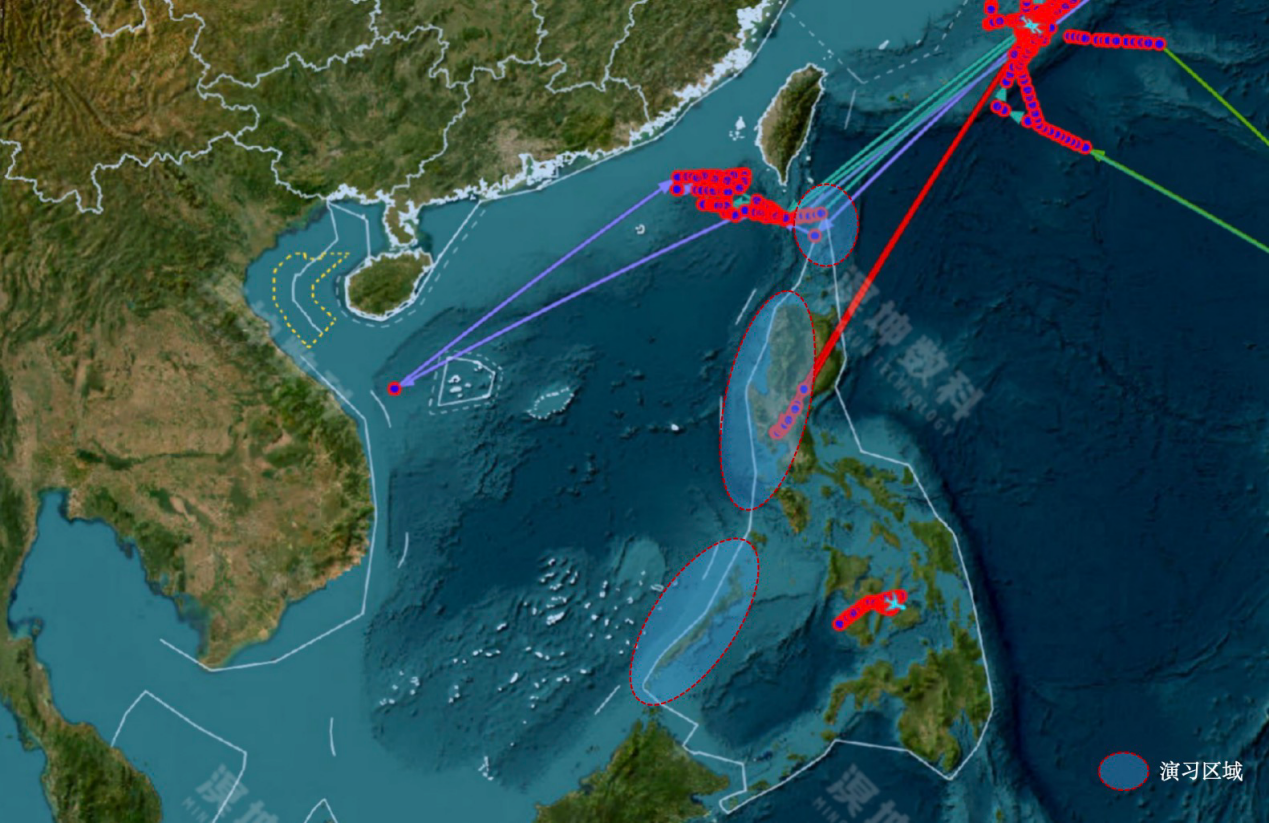
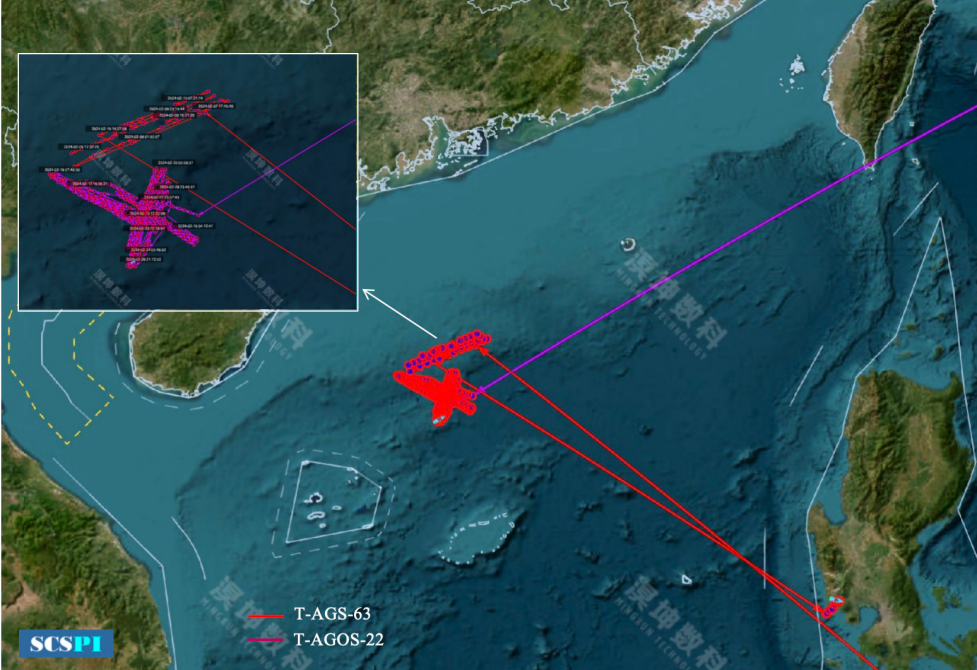
Content
I. Continuously Strengthened Strategic Platforms’ Activities
II. Uneven Increase of Marine and Aerial Reconnaissance
III. Low-frequency Declaratory Operations
IV. Continuously Boosted Joint Operations with Allies
V. Exercises and Drills for Enhancing Combat Readiness
VI. Summary and Prospect
请下载PDF文件阅读完整报告

